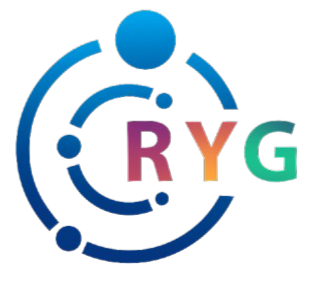Building upon the foundational insights from How Mythology Shapes Modern Game Design, this article explores how cultural symbols beyond mythology serve as vital tools for storytelling, visual design, and gameplay innovation. As game developers seek authentic ways to connect players with diverse cultures, understanding the nuanced role of symbols becomes increasingly important. From ancient artifacts to indigenous motifs, these symbols carry layered meanings that enrich game narratives and foster cultural appreciation.
Table of Contents
- The Cultural Significance of Symbols in Game Narratives
- Beyond Mythology: Exploring Broader Cultural Symbols in Modern Games
- Visual Language and Iconography: Deciphering Cultural Symbols in Game Art
- Symbolic Mechanics: Designing Gameplay Around Cultural Symbols
- Narrative Depth Through Symbolism: Crafting Multi-layered Stories
- Ethical Considerations in Using Cultural Symbols
- The Future of Cultural Symbols in Game Design
- Connecting Back to Mythology: From Symbols to Broader Mythic Narratives
The Cultural Significance of Symbols in Game Narratives
Symbols serve as powerful carriers of cultural identity within games, acting as visual cues that evoke shared histories, beliefs, and customs. When thoughtfully integrated, they enable players to access a deeper understanding of a culture’s worldview, moral values, and social norms. For instance, the use of Native American motifs in Never Alone (2015) not only enriches storytelling but also raises awareness of indigenous traditions through authentic representations.
Research indicates that culturally accurate symbols can significantly enhance player immersion and emotional engagement. A study by the International Journal of Gaming & Computer-Mediated Simulations (2020) found that players connected more strongly to games featuring culturally specific symbols when these were presented respectfully and accurately, fostering cultural learning alongside entertainment.
Beyond Mythology: Exploring Broader Cultural Symbols in Modern Games
While mythological symbols often dominate discussions, many modern games incorporate a wider spectrum of cultural motifs, including indigenous, regional, and folk symbols. These elements often reflect living traditions and local histories, providing fresh narrative perspectives. For example, Guacamelee! (2013) employs Mexican folkloric imagery and symbols to craft a vibrant, culturally rooted story that celebrates regional mythology.
Differentiating mythological symbols from other cultural motifs is essential. Mythic symbols tend to embody archetypes and universal themes, whereas regional or folk symbols often represent specific cultural practices or historical events. Recognizing this distinction enables developers to craft narratives that respect and accurately portray diverse cultural realities.
Case studies such as Okami (2006) demonstrate how integrating indigenous Japanese symbols and folklore into gameplay mechanics can create immersive worlds that honor cultural specificity without resorting to stereotypes.
Visual Language and Iconography: Deciphering Cultural Symbols in Game Art
Visual iconography is a primary channel through which cultural meanings are communicated in games. Effective integration of symbols—through color palettes, motifs, and design elements—can evoke specific cultural contexts instantly. For example, the use of red and gold in Jade Empire reflects Chinese imperial aesthetics, reinforcing the game’s cultural setting.
Techniques such as stylized art, pattern repetition, and contextual placement help embed cultural symbols seamlessly into game aesthetics. Developers often employ research and collaboration with cultural consultants to ensure authenticity, avoiding superficial or stereotypical representations.
“Cultural misrepresentation can diminish player trust and perpetuate stereotypes. Authenticity and respectful portrayal are not just ethical choices—they are essential for meaningful engagement.”
Symbolic Mechanics: Designing Gameplay Around Cultural Symbols
Embedding cultural symbols into gameplay mechanics creates layers of meaning that deepen immersion. Rituals, ceremonies, or traditional puzzles rooted in cultural practices can serve as core gameplay elements. For example, the ritualistic dance sequences in Okami are not just aesthetic but integral to progressing the story, reflecting Shinto traditions.
Designers often develop puzzles or rituals based on authentic cultural practices, such as arranging symbols according to traditional patterns or performing culturally significant gestures. Balancing innovation with authenticity requires close cultural consultation to prevent misinterpretation or disrespect.
An illustrative case is Never Alone, which incorporates Yup’ik storytelling and traditional games, fostering genuine cultural engagement while providing innovative gameplay experiences.
Narrative Depth Through Symbolism: Crafting Multi-layered Stories
Symbols serve as narrative tools that convey complex cultural themes and moral values without explicit exposition. They enable players to interpret layered meanings, fostering a richer understanding of the depicted culture. For instance, the recurring use of the lotus in games inspired by Asian cultures often symbolizes purity and enlightenment, adding depth to character arcs and storylines.
Symbols can also foreshadow plot developments or serve as markers of character growth. In Hades, the use of ancient Greek motifs and symbols underpins the mythic themes of fate, heroism, and rebirth, resonating with cultural archetypes and moral dilemmas.
Encouraging players to interpret symbols promotes cultural learning and personal reflection, transforming gameplay into an educational experience. As game narratives become more sophisticated, the strategic use of symbolism becomes vital for creating memorable, multi-layered stories.
Ethical Considerations in Using Cultural Symbols
Respectful representation versus cultural appropriation is a critical concern. Developers must ensure that symbols are used in ways that honor their original meanings and significance. Collaborating with cultural consultants and community members helps prevent misappropriation and stereotypes.
Navigating sensitivities around sacred or controversial symbols requires transparency and sensitivity. For example, using Indigenous sacred symbols without proper context or permission can cause offense and damage cultural relationships. Legal and ethical frameworks should guide the inclusion of such symbols.
“Cultural symbols are not just artistic elements—they are living representations of identity. Respecting their origins sustains authenticity and fosters genuine cross-cultural understanding.”
The Future of Cultural Symbols in Game Design
Emerging trends include leveraging technology such as augmented reality (AR) and virtual reality (VR) to create immersive cultural experiences. These tools can bring symbols to life, allowing players to interact with cultural artifacts in unprecedented ways. For example, AR applications could enable players to explore indigenous sites or artifacts virtually, fostering education and preservation.
Furthermore, games are increasingly seen as platforms for cultural preservation and education. Collaborations with cultural institutions and communities can produce games that serve as repositories of intangible heritage, promoting awareness and respect for diverse traditions.
As the industry evolves, developers have opportunities to use cultural symbols responsibly to tell compelling stories that honor and preserve cultural diversity, ensuring that gaming remains a medium for cultural dialogue.
Connecting Back to Mythology: From Symbols to Broader Mythic Narratives
Culturally rooted symbols often serve as the seeds for developing modern mythic storytelling within games. They act as bridges between ancient archetypes and contemporary narratives, allowing players to engage with universal themes through specific cultural lenses. For example, the use of the dragon motif across different cultures—from Chinese myth to European folklore—illustrates how symbols evolve into modern mythic icons.
This interplay between mythic archetypes and cultural symbols enriches game worlds, enabling designers to craft stories that resonate on both individual and collective levels. It also facilitates the reinvention of myths, adapting them to contemporary contexts while respecting their origins.
Ultimately, understanding the foundational role of mythology helps developers harness cultural symbols not just for aesthetic purposes but as vital elements in storytelling that reflect universal human experiences.
By delving into the diverse spectrum of cultural symbols and their applications, game creators can craft narratives that are authentic, respectful, and deeply engaging. Recognizing the importance of cultural context and collaboration ensures that symbols are used responsibly, fostering both entertainment and cultural understanding in the digital age.



Leave a Reply